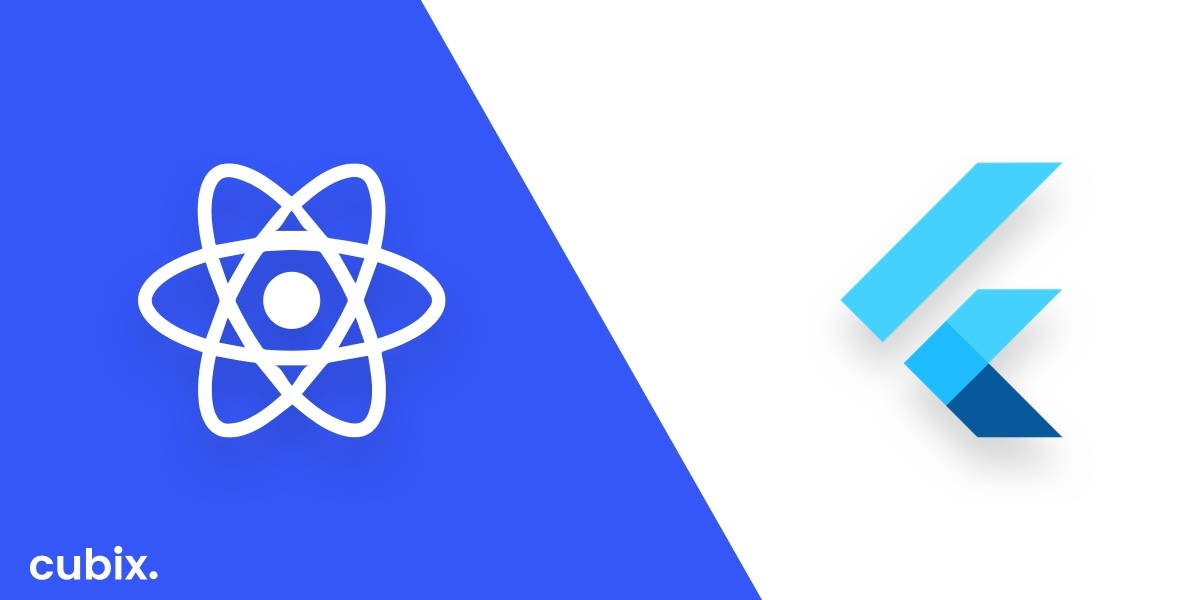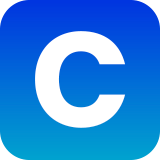What does this article cover?
In this blog, you will learn about the differences between two popular cross-platform development frameworks; Flutter vs. React Native. We will examine them in terms of programming language, architecture, graphic capabilities, API, documentation, and testing. So, without any delay, let’s roll into it.
Purpose of Creating this Article
Businesses want more customers and desire expanding their revenue streams. For that, they target major app releasing platforms; Google Play and App Store. And their cross-platform app development aspirations either find React Native or Flutter suitable. Knowing which framework is worth their time, investment, effort, and meeting the requirement, is crucial before beginning the development phase.
This article will give you concise information to wisely decide and choose the development environment for your app idea.
But before we conduct a head-to-head comparison, let’s start with the introduction.
What points does this article cover?
What is React Native?
React Native (RN) is a framework based on JavaScript for mobile app development. You can build natively-rendered Android and iOS apps on it. To add more, RN utilizes the same codebase for creating an app for various platforms.
React Native is from Facebook and first came into the market as an open-source project in 2015. It proved its worth in a few short years as a viable solution for cross-platform mobile app development.
Famous apps built on React Native
A visually-engaging app that contains inspirational quotes, images, and creative concepts for aesthetic-minded people. You can find ideas related to anything that exists in this world on this app.
Discord
Discord is a well-known platform among gamers. It has a mobile app and desktop program that lets gamers network, interact, and socialize by building a community.
Walmart
A famous shopping store that delivers your favorite items at your doorstep in a short time span. The app is also used at Walmart’s physical stores to pay securely and quickly.
React Native plays an essential role in improving the Instagram development cycle.
What is Flutter?
Flutter is more like a gift for developers from Google. It is an open-source and free-to-use platform. In short and simple words, you can develop native-quality applications for both Android and iOS with one-time coding using Dart, a language used by Flutter. This implies that you aren’t required to write the same app in a different language for the other platform.
Famous apps built on Flutter
Reflectly
Reflectly is an AI-enabled personal journal app combined with cognitive behavioral therapeutic logic, that helps relieve users of daily stress and negative energy. It takes care of your mental health and makes you spiritually strong. You can also express what you feel emotionally in this app.
The app analyzes a user’s day-to-day actions and provides insights to tackle issues related to his/her mental health.
Pairing
A social dating app that pairs you with a person allowing you to share feelings and exchange words. It has a vast growing community supporting a mission to empower relationships.
Google Ads
A mobile app for managing all of your Google ad campaigns. It is like a compact version of the desktop program allowing output tracking without restricting it to a workplace.
My BMW App
This application provides you with information about your vehicle at any time, acting as a universal interface. The app also supports remote operations like door locking and unlocking and a 3D surrounding view if you own a newer BMW model.
React Native vs. Flutter in App Development
In terms of popularity, both frameworks have emerged as big names in the market. However, there are some factors on which they each perform better than or even outperform the other. So, let's put them side-by-side and compare them according to the following criteria:
Programming Language
JavaScript has significant popularity among developers. Even many software development companies look for expertise in this language while hiring app developers for cross-platform development. In a 2020 developers’ survey by Stack Overflow, JavaScript emerged as the most commonly used language consistently eight years in a row.
In the other proverbial world, Flutter is based on a relatively new programming language, Dart, typically used inside the Google environment. The adoption rate of this language is comparatively low, but that doesn't imply that it lacks in performance.
Dart also offers a faster compilation of native code along with more straightforward widget customization.
In Short: It depends on the developer’s preference.
Score | |
React Native | 1 |
Flutter | 1 |
App Architecture
With React Native, the communication between the JavaScript and your platform’s native language is established via the JavaScript bridge. Both sides send JSON messages for interaction that are asynchronous messages. However, lag may occur due to the bridging aspect as it affects your app rendering speed.
Meanwhile, Flutter does not require any bridging mechanism for communication with native components. Instead, it comes as a full-fledge package, including Material Design and Cupertino.
In Short: Flutter apps tend to be more stable than React Native applications.
Score | |
React Native | 1 |
Flutter | 2 |
User Interface (UI) Design
Both platforms provide appealing graphic features but have a completely contrasting approach to creating UI. Native visual elements like menus, navigation, and buttons are inherited in React Native and provide a seamless user experience. Moreover, the app's elements are updated with your OS version update, thereby, maintaining the native feel.
It’s noteworthy to mention that the app view will differ slightly on Android and iOS mobile devices.
In the case of Flutter, the app looks and feels the same despite the model and OS version. Furthermore, if not intentionally adjusted by the developer, navigation elements remain the same. So, if the programmer is not attentive to this peculiarity, Android users might get an iOS-style menu and vice versa.
In Short: User experience with React Native is more native-oriented, while Flutter offers high UI designing flexibility.
Score | |
React Native | 2 |
Flutter | 3 |
Documentation
Both frameworks have rich documentation but React Native’s documentation is based more on presumptions. Information and guides related to environment setup are little to none. It starts with the project directly.
On the other hand, Flutter provides complete information, from installing the files to starting a project. It also comes with a tool that guides you with the setup.
In Short: Flutter is more comprehensive in terms of documentation.
Score | |
React Native | 2 |
Flutter | 4 |
Application Programmable Interface (API)
React Native is best if you want interfaces for Wi-Fi, NFC payment, or biometrics. In addition, there is API support for Bluetooth, geolocation, and other interfaces. But you should not expect graphic customization as React Native lacks a drawing tool.
Flutter fusion with Dart makes use of several APIs very easily. For the graphics, it uses a library called Skia, which also changes the view when the UI is retouched. Also, with GPU, the loading of the app happens to be faster.
In Short: the API capabilities of Flutter make it a clear winner.
Score | |
React Native | 2 |
Flutter | 5 |
Testing
React Native comes with a few unit-level testing frameworks, but you don't get any official support for UI level testing or integration. As a result, developers mostly utilize tools like Detox and Appium from third parties to do the job, but again, they are not official.
Flutter takes the lead here and provides testing for widgets, units, and integration. The documentation provided for testing is also comprehensive and contains detailed information. In addition, the deployment process is also officially documented by Flutter.
In Short: Flutter is the winner in app testing and deployment.
Score | |
React Native | 2 |
Flutter | 6 |
So…
As per the score, it seems Flutter is the winner. But hold on, don't be too quick with your judgment. These were just a few factors that we discussed, but there are more that we have not examined in this article.
Both frameworks demonstrate exceptional performance in the development industry and offer effort-saving benefits to programmers. We should also consider the project requirement because it creates the basis for choosing a platform wisely.
But why do you need to worry? You need an excellent-performing application for your business, right? And when you have an expert that involves you at the brainstorming and ideation stage, you end up selecting the right framework. Regardless, they own the decision when helping you achieve a future-proof project. 😊

